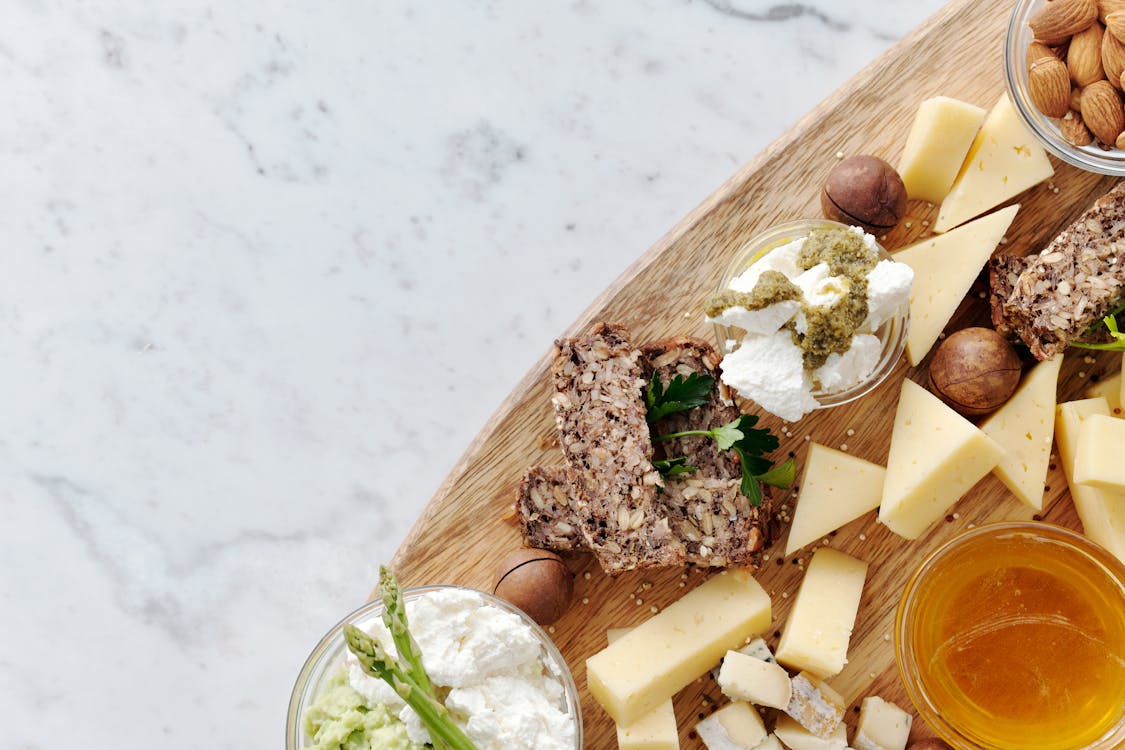Introduction
Snacks play an essential role in our daily lives, providing convenient and often satisfying options for refueling between meals or satisfying cravings. Whether enjoyed as a quick pick-me-up, a pre-workout boost, or a late-night indulgence, snacks come in a wide variety of flavors, textures, and nutritional profiles. Understanding the features of snacks can help us make informed choices that support our health and dietary preferences. Here are some key features of snacks:
1. Nutritional Content:
- Nutrient Density: Nutrient-dense snacks provide a high concentration of essential nutrients relative to their calorie content. Examples include fruits, vegetables, nuts, seeds, and whole grains, which are rich in vitamins, minerals, fiber, and antioxidants.
- Macronutrients: Snacks vary in their macronutrient composition, including carbohydrates, protein, and fat. Some snacks are carbohydrate-rich for quick energy, while others are protein-rich for muscle repair and satiety. Healthy fats from sources like nuts, seeds, and avocado can provide sustained energy and promote feelings of fullness.
- Fiber: Snacks high in fiber promote digestive health, regulate blood sugar levels, and support satiety. Fiber-rich options include fruits, vegetables, whole grains, nuts, seeds, and legumes.
- Added Sugars: Be mindful of snacks with added sugars, which can contribute to excessive calorie intake, weight gain, and increased risk of chronic diseases. Opt for snacks with little to no added sugars, or choose naturally sweet options like fruits or unsweetened yogurt.
- Sodium: Some snacks, particularly processed and packaged foods, may be high in sodium, which can contribute to high blood pressure and other health issues. Choose snacks with lower sodium content or enjoy homemade options seasoned with herbs and spices instead of salt.
2. Portability and Convenience:
- On-the-Go Options: Snacks that are portable and convenient are ideal for busy lifestyles, allowing for quick and easy consumption while on the move. Examples include pre-packaged bars, single-serve portions of nuts or dried fruit, and pre-cut vegetables with dip.
- Packaging: Consider the packaging of snacks, opting for options that are easy to open, resealable, and environmentally friendly. Choose snacks packaged in recyclable materials or opt for bulk options to reduce waste.
3. Taste and Flavor Profile:
- Variety: Snacks come in a wide range of flavors and textures to suit different preferences and cravings. From sweet and savory to crunchy and creamy, there's a snack for every palate. Experiment with different flavor combinations and cuisines to keep things interesting.
- Taste Preferences: Consider your personal taste preferences when choosing snacks. Whether you prefer sweet, salty, spicy, or umami flavors, there are snacks available to satisfy every craving.
4. Satiety and Hunger Management:
- Protein and Fiber: Snacks high in protein and fiber promote feelings of fullness and satiety, helping to curb hunger and prevent overeating at subsequent meals. Incorporate snacks like Greek yogurt, hummus with vegetables, or trail mix with nuts and seeds for a satisfying boost.
- Portion Control: Pay attention to portion sizes when snacking to avoid consuming excess calories. Opt for single-serve portions or pre-portion snacks into smaller containers to prevent mindless eating.
5. Functional Benefits:
- Energy Boost: Some snacks are specifically designed to provide a quick energy boost, making them ideal for pre-workout fuel or mid-afternoon slumps. Look for snacks with a balance of carbohydrates and protein to sustain energy levels without causing blood sugar spikes and crashes.
- Performance Enhancement: Athletes and active individuals may benefit from snacks formulated to enhance performance and recovery. These snacks often contain a combination of carbohydrates, protein, and electrolytes to replenish energy stores and support muscle repair and hydration.
6. Cultural and Culinary Influence:
- Cultural Significance: Snacks can reflect cultural traditions and culinary influences, offering a taste of different cuisines from around the world. Explore international snacks and traditional recipes to broaden your culinary horizons and discover new flavors and textures.
- Homemade Options: Homemade snacks allow for customization and creativity, allowing you to tailor recipes to your taste preferences and dietary needs. Experiment with homemade granola bars, energy bites, roasted chickpeas, or veggie chips for healthier alternatives to store-bought options.
7. Ingredient Quality and Purity:
- Whole Ingredients: Choose snacks made with whole, minimally processed ingredients whenever possible. Whole foods like fruits, vegetables, nuts, seeds, and whole grains are nutrient-rich and provide natural sources of energy and flavor.
- Clean Label: Look for snacks with simple, recognizable ingredients and minimal additives, preservatives, and artificial flavors or colors. Reading labels can help you make informed choices and avoid products with unnecessary or potentially harmful ingredients.
8. Allergen Considerations:
- Allergen-Free Options: For individuals with food allergies or intolerances, allergen-free snacks provide safe and convenient options for satisfying cravings without compromising health or safety. Look for snacks labeled as gluten-free, dairy-free, nut-free, or soy-free to accommodate dietary restrictions and preferences.
- Cross-Contamination: Be aware of potential cross-contamination risks when choosing allergen-free snacks, especially if produced in facilities that handle allergenic ingredients. Check labels for allergy warnings and contact manufacturers if you have specific concerns about allergen exposure.
9. Social and Emotional Aspects:
- Social Sharing: Snacks can serve as a focal point for social gatherings, providing opportunities for sharing and bonding with friends, family, and colleagues. Choose snacks that are easy to share and enjoy together, such as a platter of cheese and crackers, a bowl of mixed nuts, or a plate of fresh fruit.
- Comfort and Indulgence: Sometimes, snacks serve as comforting treats or indulgent pleasures, satisfying cravings and lifting spirits during times of stress or boredom. Enjoying occasional indulgences in moderation can contribute to overall enjoyment and satisfaction with food.
10. Cost and Affordability:
- Budget-Friendly Options: Snacks come in a range of price points to suit different budgets and financial constraints. Choose affordable options like seasonal fruits, bulk nuts and seeds, or homemade snacks to stretch your food dollars without sacrificing taste or nutrition.
- Value for Money: Consider the nutritional value and satiety factor of snacks when evaluating their cost-effectiveness. While some snacks may be more expensive upfront, they may provide greater satisfaction and nourishment per serving compared to cheaper, less nutritious options.
In conclusion, snacks offer a convenient and versatile way to fuel our bodies, satisfy cravings, and support overall health and well-being. By considering the features of snacks such as their nutritional content, portability and convenience, taste and flavor profile, satiety and hunger management, functional benefits, cultural and culinary influence, ingredient quality and purity, allergen considerations, social and emotional aspects, and cost and affordability, we can make informed choices that align with our health goals, dietary preferences, and lifestyle needs. Whether enjoyed on-the-go, at home, or in social settings, snacks can contribute to a balanced and enjoyable approach to eating that promotes health, happiness, and culinary exploration.

